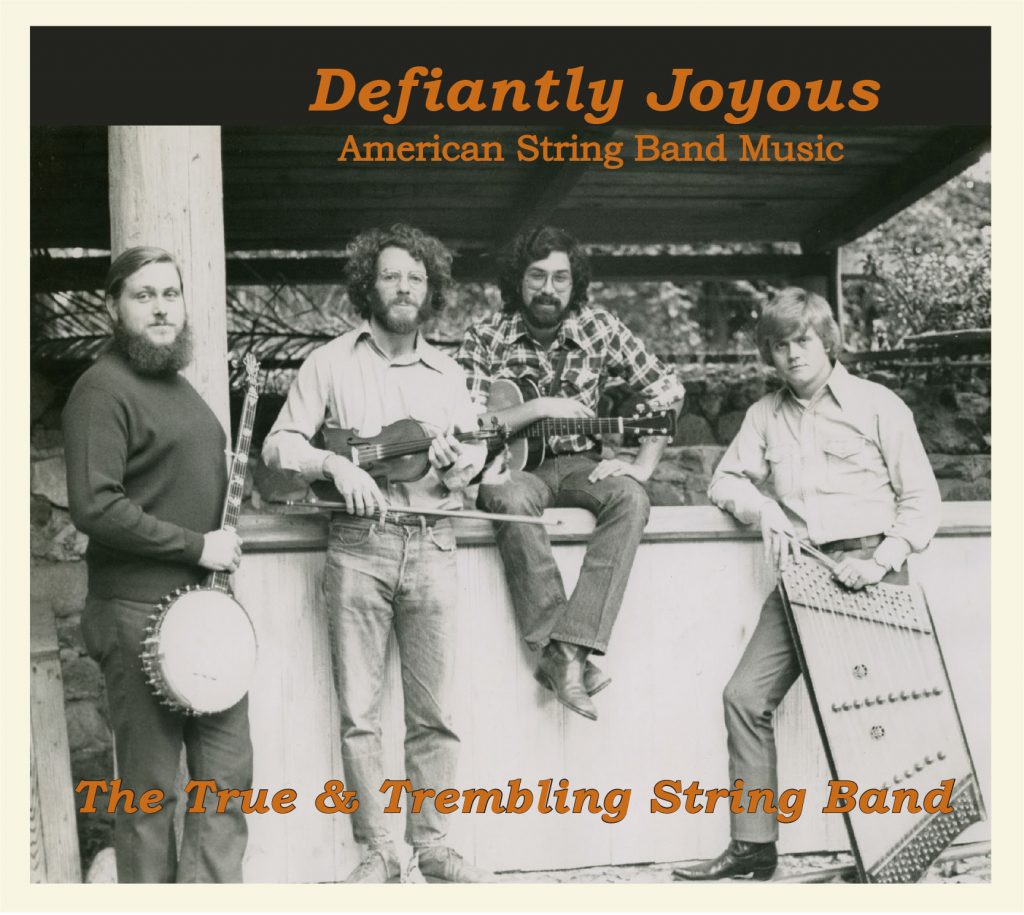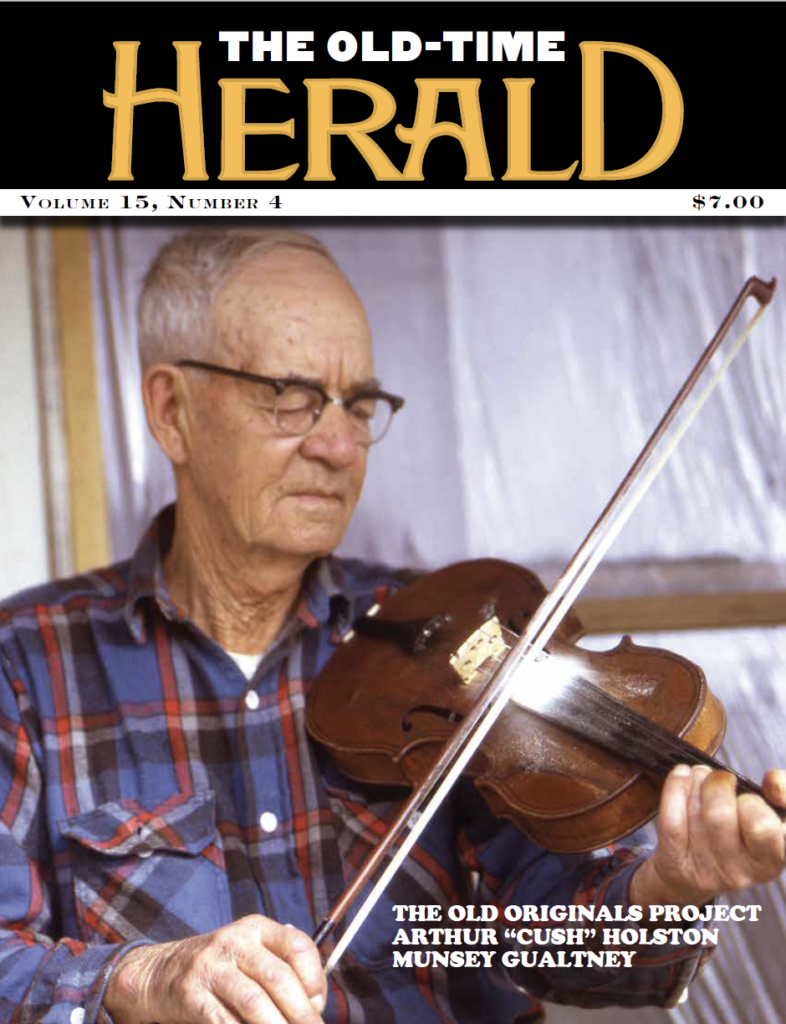There were a lot fewer people playing old-time music in the early 1970s than now, and when people living nearby found each other and started playing together, they often did the logical thing: start as a band. The True and Trembling String Band was such a band, formed in 1973 in Southern California. It is a pretty safe bet that the band listened to the New Lost City Ramblers, because “True and Trembling Brakeman,” a song first recorded by Aulton Ray in the 1920s, is on NLCR Volume 5.
The band recorded here was Dick Owings (fiddle), Bob Webb (banjo), Allen Hart (banjo), Chris Cooper (guitar), and Don McCarty (mandolin and hammered dulcimer). Later, after Hart left for Army duty in Alaska, the band added Dan Levitt on bass and Bob McLeod on guitar, but that configuration does not appear on this CD. About ten of the tracks are done with McCarty’s hammered dulcimer as a lead instrument. To these ears, that combination is most successful when mixed so that the fiddle is most prominent, and hammered dulcimer, while also a lead instrument, is not as prominent. “Temperance Reel/Stony Point” and “Seneca Square Dance” are examples. On “Sullivan’s Hollow,” however, there are four melody instruments: two banjos, fiddle, and hammered dulcimer, and the sound is a little too mushy, thanks in part to the sustain of the hammered dulcimer. On another cut, “Turkey in the Straw,” the hammered dulcimer and banjos are clearly in the lead, fiddle is less prominent, and it’s wonderful. Go figure. And on “Little Rabbit” the banjos stand out, while the hammered dulcimer is well in the background. My conclusion: the sound engineer was experimenting with different microphone placements, and these recordings are probably all we have of the band, which played regularly for about five years. There are a couple of live cuts (notably the “Liberty/Mississippi Sawyer” medley) which seem to have been recorded while playing for cloggers and demonstrates what a good dance band the True and Trembling String Band were.
An essay about the band, found on richmondwebb.com, tells us that the band’s repertoire came largely through listening to Dave Leddel’s collection of old 78s. (Remember, this is 1973!) They probably also listened to the Hollow Rock String Band, who first recorded in 1968, as their source for Henry Reed’s “Ducks on the Pond.” This is one of the gems of the CD; the combination of fiddle, two guitars, Allen Hart’s concertina, and McCarty’s hammered dulcimer is a wonderful blend, and good music!
Smaller combinations from within the band are also quite effective: Webb’s banjo, backed with guitar, plays a clean, musical “Rocky Mountain Goat” maybe inspired by John Burke’s arrangement for banjo. Fiddle and banjo? Old chestnuts such as “Boatman,” and “Sally Ann,” and a new chestnut: Hank Bradley’s “Teabag Blues.” Vocals are few, but well done: the Mainers’ “Run Mountain” and Sara Carter Bayes’ “Railroading on the Great Divide.”
The band’s self-description – “The True and Trembling sound was neither a slavish restoration of long-scratched recordings nor a radical departure from traditional recordings” – is both accurate and modest. They had their own sound, and it was a good one.


Leave a Reply